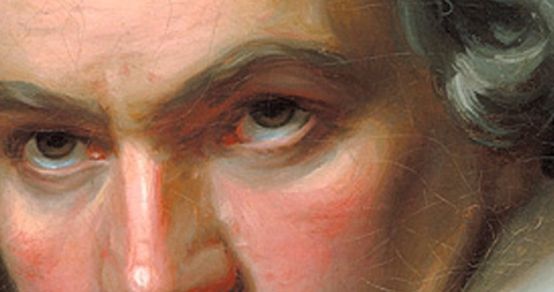Hammerklavier Sonata
Beethoven every Friday: to mark his 250th birthday, we take a look at one of his works every week. Today it's his fortepiano sonata.

The nickname "Hammerklavier" seems somewhat superfluous for this sonata today. For what other instrument could it have been written in 1817/18? In fact, it goes back to the title page of the first Viennese edition of 1819, for which Beethoven himself no longer wanted to tolerate the traditional Italian scoring: ".... that instead of piano-forte, Hammerklawier will be used on all our works for which the title is German." Posterity did not realize or want to realize that the Sonata in A major op. 101 had already appeared in print two years earlier with this indication. It is also possible that the use of the epithet reflects respect for a work that was considered unplayable for a long time due to its technical demands and expansive formal dimension - or in the words of Daniel Barenboim: "The Hammerklavier Sonata doesn't get any easier if you don't play it."
The misunderstood metronome marking of the first movement (half note = 138), which would double the prescribed tempo in the usual reading, undoubtedly contributed to this respect (a recording by Artur Schnabel from 1935 demonstrates the musical absurdity of such a realization, but an essay by Johann Sonnleitner in the new edition of the Wiener Urtext Edition, which is well worth reading, provides more clarity on the matter). In any case, Franz Liszt still assumed that the performance of the entire sonata "take almost an hour" - Glenn Gould's rather thoughtful interpretation took almost 50 minutes. The hitherto unheard-of monumentality associated with this playing time was, of course, something Beethoven had in mind from the very beginning: "Now I am writing a sonata which is to be my greatest" (as reported by his pupil Carl Czerny). Incidentally, the sound of the work, which goes far beyond the possibilities of the instrument, prompted Felix Weingartner to write a version for large orchestra in 1925/26.
SMZ - This new edition of the sonata has been published by Wiener Urtext Edition under the number UT 50432. Karl-Andreas Kolly reviewed it for the Schweizer Musikzeitung: to the review
Listen in!







